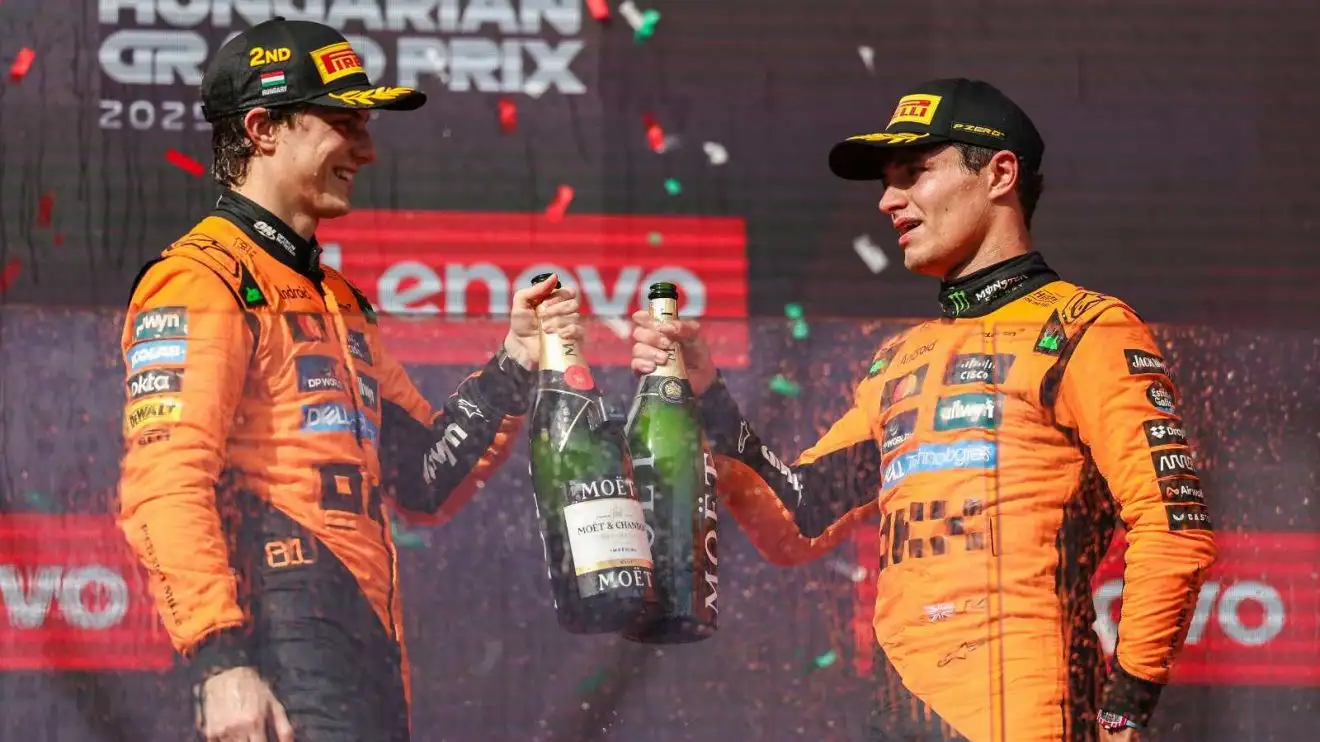Why McLaren should have let its drivers battle from the very start

Would things be different in 2025 if McLaren allowed Oscar Piastri and Lando Norris to battle right from the start?
Lando Norris’ contact with teammate Oscar Piastri in the opening lap of the 2025 Singapore Grand Prix has resulted in countless declarations from motorsport media that now it is finally time for the McLaren duo’s gloves to come off. But the team never should have asked its drivers to wear those gloves in the first place.
McLaren’s mindset — that the team comes first, and that priority goes only to the driver with track position in any single race — has only served to get the team in trouble as the 2025 season winds to a close.
Formula 1: Perfecting the art of egocentric ambition
When the Formula One World Championship of Drivers was introduced back in 1950, it was founded on one simple premise: Who is the greatest driver in the world? The sport has been asking — and answering — that question every season for the past 75 years, much to the delight of the imaginations of fans all around the world.
The Formula 1 Constructors’ Championship, then, can be seen as something of an afterthought. Introduced in 1958, this title was designed to reward the hard-fought efforts of the teams that got those high-powered, technically superior racing machines to the track, from the factory-backed might of Mercedes to the down-home efforts of Cooper, the constructors’ title was determined by an amalgamation of just one of the constructor’s cars during a grand prix, its best-performing one.
As the sport evolved, the constructors’ championship grew in relevance as new technologies were debuting on a world stage with fury and as the costs of running a successful operation mounted.
A race team, though, is an inert thing, devoid of its own human aspirations of greatness. The employees and personnel who compose that team often shape the way that team is publicly perceived, creating more or less sympathetic stories that fans can follow, but the ultimate effect is akin to rooting for the corporate ambitions of your favorite soda company. You might consider yourself a die-hard Pepsi person, and you might enjoy seeing Pepsi succeed because it means you’re able to try fun new flavors, but it’s highly unlikely that you’ll feel an element of human connection to the brand itself.
More analysis from the Singapore Grand Prix:
👉 Singapore GP conclusions: Norris corners Piastri, Russell’s big chance, double Red Bull exit?
👉 Singapore GP driver ratings: Resurgent Alonso, Lewis Hamilton in hot water
That’s what makes the drivers’ championship in Formula 1 so exhilarating for fans: It enables a level of interpersonal identification and connection that generally doesn’t exist with a team. You can relate to a victor’s celebration or a backmarker’s ambition. You can see slices of life behind the helmet, which adds real stakes to every race. That’s what keeps fans flocking to the sport year after year.
And it’s also what makes young racers choose the life of Formula 1 in the first place — an act that requires a certain renunciation of easily-found pleasures in place of the hard work of building a career and the selfishness that results from putting your desire for a World Championship at the very forefront of your thoughts.
That’s where McLaren went wrong.
Singapore illustrates the dark side of papaya rules
Like a chameleon, McLaren Racing has evolved over the years to best fit Formula 1’s various eras.
Founder Bruce McLaren brought together a group of dedicated mechanics and engineers to introduce his race team to F1 in the 1960s, believing that he had what it took to develop a functioning, championship-capable race team. Put Ron Dennis in charge, though, and you’ve got something new, a team that asked its drivers to act as austere brand representatives.
With Zak Brown taking over as McLaren Racing CEO, and with Andrea Stella serving as the outfit’s Formula 1 team principal, we’ve entered a new era of McLaren — an era that saw the team become back-to-back constructors’ championship victors just five years after it nearly went bankrupt.
The transformation comes thanks both to an influx of money from impressive sponsorship deals and to a more democratic approach to running a team. McLaren deviated from the standard method of signing one “primary” driver and one to serve as the less-favored but still competitive points-scorer, instead opting for two extremely talented young racers in the form of Lando Norris and Oscar Piastri.
But then the team asked those young drivers to surrender their individual desire for the team good.
In 2024, it was a genius move. Allowing two talented drivers to find their footing without overbearing interference from the team simultaneously allowed McLaren to enter the constructors’ title conversation and lifted the team to heights it hadn’t seen in years. By 2025, though, that mindset was already out of date.
Heading into 2025, McLaren was a clear favorite, and both of its drivers quickly established themselves as title contenders. When preseason testing and the Australian Grand Prix confirmed their speed, the team needed to scale back its “papaya rules.”
Piastri has defined “papaya rules” as, essentially, being just one rule: don’t crash into each other. But as we’ve seen throughout the year, that one rule quickly falls apart under the slightest amount of pressure.
It falls apart when McLaren asks Piastri to cede position to Norris. It falls apart when McLaren ‘reminds’ its drivers of how the team goes racing in the heat of a battle. It falls apart because it operates on an assumption that the team will be able to treat both drivers fairly, and in a sport like Formula 1 where only one driver on a team can win, there is no such thing as equality.
Motorsport media — myself included — has been hemming and hawing about papaya rules all year long, and many have deemed the Singapore Grand Prix to be a turning point in the year. With the constructors’ title wrapped up and Norris violating — however unintentionally — the single ‘don’t crash into your teammate’ mantra that defines papaya rules, many feel that now is the time for the gloves to come off.
To me, that time has long since passed.
I don’t believe that McLaren should have simply sent its drivers out on track frothing at the mouth and ready to wipe one another out at every possibility, because there should be some amount of good sense in Formula 1. But I also believe that there’s a dramatic difference between asking your drivers to behave while racing for position, and asking them to allow the team to manipulate the course of the championship regardless of bad luck or missteps.
Now, ‘manipulate’ is a strong word, and I want to be clear that I do not believe McLaren is operating on some secret mentality where it favors one driver over another, nor do I believe it’s causing race-wide chaos in a bid to benefit itself. But I do believe that attempting to level the scales of justice between both drivers is indeed the kind of manipulation that a dominant team simply does not need, because it opens up one can of worms after another, with the approach to every can feeling like a contradiction of what you did the last time. And I can assure you that both drivers are going to feel aggrieved in the process.
I understand McLaren’s desire to avoid playing favorites, but at no point in 2025 has the team simply allowed its drivers to race one another for position. The rules of engagement have changed every grand prix weekend. Even its most foundational rule — do not make contact with your teammate — cracked under the slightest hint of pressure.
And that’s the problem with McLaren’s approach in 2025.
By putting the team’s orders and desires at the forefront; by attempting to maintain a ‘level’ playing field; by negating the affective power of a driver’s championship desire; McLaren has only managed to twist itself into knots of misgiving that mean both drivers will enter these final six races with their “gloves off” and some hefty chips on their shoulders.
If McLaren had let its racers do what they do best — drive — then there wouldn’t have been any need for gloves in the first place.
Want to be the first to know exclusive information from the F1 paddock? Join our broadcast channel on WhatsApp to get the scoop on the latest developments from our team of accredited journalists.
Read next: Winners and losers from the 2025 Singapore Grand Prix





